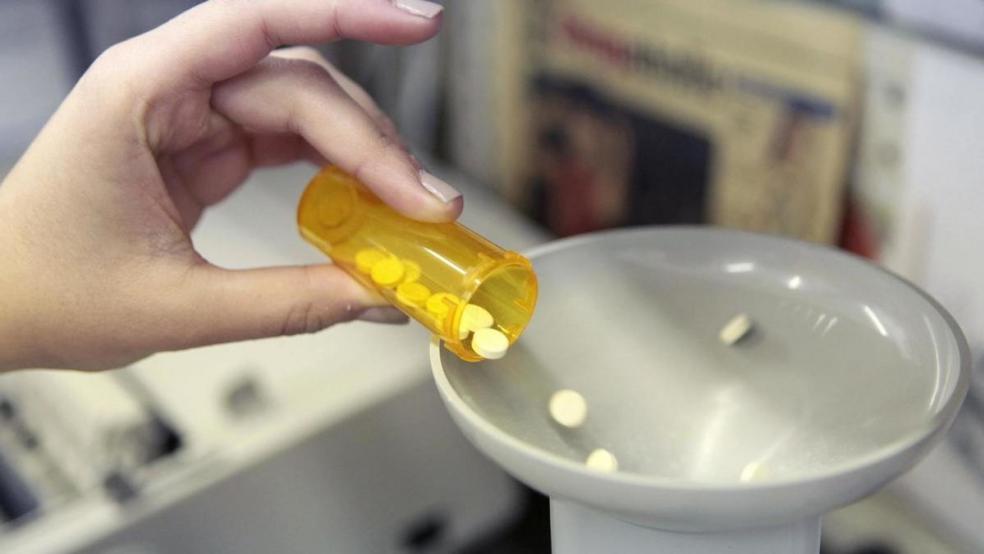From all indications, President Trump and Republican leaders on Capitol Hill will do little this year to cope with soaring prescription drug prices, despite Trump’s promises of tough action during his campaign.
However, in a novel reading of the unfolding drama on Capitol Hill over health care reform, a former top Democratic budget official sees the potential for a revolution in government drug price controls if the Senate version of the GOP’s Obamacare repeal-and-replace legislation wins approval.
Related: How Big Pharma Lobbyists Keep Medicare Drug Prices High
Peter R. Orszag, a vice chairman of investment banking at Lazard, has mapped out a scenario in which passage of the Senate plan – with its nearly $800 billion in Medicaid cuts over the coming decade – would ultimately lead to “European-style price controls and rationing of prescription medications.”
For sure, the former director of the Congressional Budget Office and director of the Office of Management and Budget during the Obama administration in no way has endorsed the Senate GOP plan as a backdoor way to address rising drug prices.
Far from it. Orzag presumably is as opposed to the GOP plan as most Democrats and even some moderate Republicans. And he’s no champion of drug rationing, which he suggests would be a “nightmare.”
But the budget veteran wrote a column in Bloomberg this week to suggest a plausible and significant side effect on drug prices if Congress ultimately votes to pass the Republican plan and effectively gut the Medicaid program in the coming decades.
Related: Ignoring Warnings, Drug Companies Hike Prices By 10 Percent
Under the controversial Senate plan crafted by Majority Leader Mitch McConnell (R-KY), Medicaid would be slashed by about $774 billion over 10 years and 15 million people currently enrolled the program for the poor and disabled would lose coverage, according to a new CBO analysis.
By 2026, federal spending on Medicaid would be reduced by 25 percent, according to CBO. The cuts would grow even more onerous after the first decade, because the Republican Senate bill ties future Medicaid funding to a much slower-growing cost of living adjustment than is currently used.
Orzag notes that after a couple of decades of this -- on top of the cuts through 2026 -- federal support for Medicaid would be cut to about half the level it would be without this legislation. The Senate plan would gradually tighten the spigot on federal funding of Medicaid by changing the system from an open-ended entitlement to a per-capita-cap or block grant.
That new federal funding system would provide the states with a fixed amount to cover all of their Medicaid beneficiaries, with virtually no wiggle room for extenuating circumstances.
Related: Extreme Rise in Some Drug Prices Reaches a Tipping Point
Caught in a vice of vastly diminished assistance from the federal government and increased liability for running Medicaid, the states would have no choice but to tighten eligibility, cut back on services, reduce payments to health care providers and health plans, dip into other parts of their budget – or a combination of all of the above.
Both the Senate and House GOP health care plans are virtually silent on drug prices. Yet Orzag believes that passage of a Republican plan this summer would unavoidably force the states to move towards drug price controls.
“One specific and perhaps underappreciated thing states could do would be to aggressively restrict Medicaid beneficiaries' access to drugs, and impose price constraints on the medicines allowed,” he wrote.
Orzag says that this would “come as a serious blow” both to beneficiaries and drug manufacturers because Medicaid is the largest insurer in the country. Medicaid spent roughly $30 billion on retail prescription drugs for its 70 million beneficiaries in 2015, or about 10 percent of the national retail drug spending total.
Truth be told, many states in recent years already have begun rationing some of their costliest drugs to try to fill gaping holes in their Medicaid budgets. As many as three-fifths of state Medicaid programs have imposed tough restrictions on millions of low-income patients and veterans seeking reimbursement for a very expensive treatment of the often-deadly hepatitis C liver infection.
Related: Drug Company Profits Soar as Taxpayers Foot the Bill
Gilead Sciences, the manufacturer of two highly effective biologic medications, Sovaldi and Harvoni, charge between $83,000 and $95,000 for a full course of treatment. Many states reeling from these costs have significantly limited access to those patients who meet specific conditions.
But beginning with a federal court ruling in Seattle last year in favor of patients, there has been a wave of lawsuits filed to force states to provide more generous coverage.
Orzag writes that under the existing Medicaid drug rebate program, states are required to cover nearly all drugs from manufacturers that have signed rebate agreements. “But they nonetheless restrict access -- by establishing preferred drug lists and prior authorization rules, and by rigidly limiting the number of prescriptions a beneficiary can fill each month,” he said.
As for more drastic steps to hold down drug prices, a handful of states already have begun exploring the possibility in a response to a voter backlash against the pharmaceutical industry during the 2016 election.
Drug price control bills have been filed in state legislatures in Oregon, Washington, Maryland, Illinois, Massachusetts, Indiana and Montana, according to Forbes. In addition, New York Gov. Andrew Cuomo (D) recently proposed drug price controls as part of his budget.





